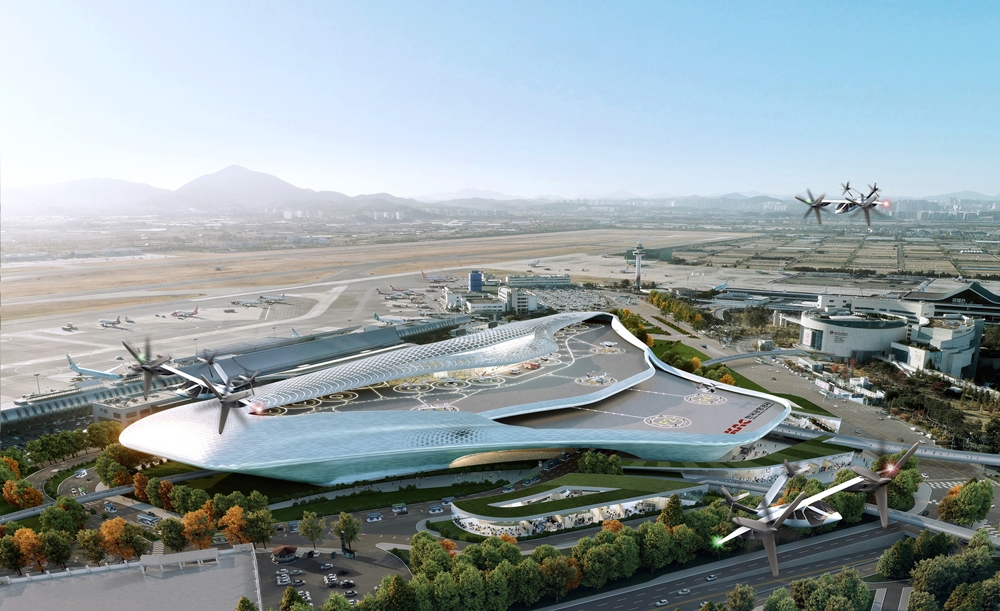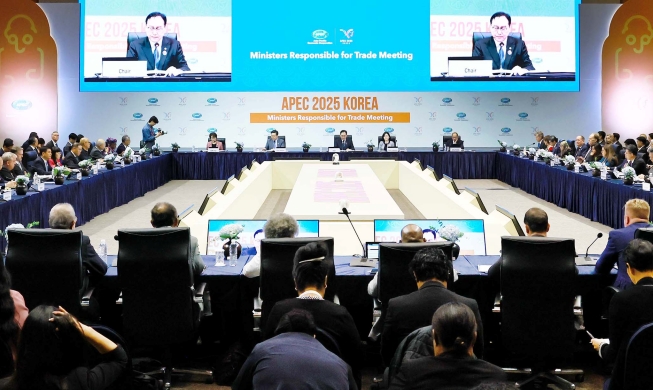
This bird's eye view shows complex transfer facilities for urban air mobility at Gimpo International Airport in Seoul's Gangseo-gu District. (Seoul Metropolitan Government)
By Gil Kyuyoung
Urban air mobility (UAM) from next year will be visible in the skies over Seoul.
Seoul Mayor Oh Se-hoon on Nov. 11 announced a future vision for his city's type of the next-generation mode of transportation at a conference on UAM, drones, artificial intelligence and new technologies at Seoul City Hall.
From the first half of next year, the city will hold tests of UAM ahead of full-scale commercial launch on two routes: the Korea International Exhibition Center, aka KINTEX, in Goyang, Gyeonggi-do Province, Gimpo International Airport and Yeouido and Jamsil-Suseo.
2026 will see pilot operation of a UAM route linking the airport, Yeouido, Jamsil and Suseo. By 2030, vertiports where UAM vehicles can land and take off from will be completed.
In 2030, construction will begin on a route network connecting the Seoul metropolitan area along with the Hangang River and the streams of Jungnangcheon, Dorimcheon, Tancheon and Hongjecheon.
UAM will enable travel from Pangyo New Town in Seongnam, Gyeonggi-do, to Gwanghwamun in downtown Seoul in just 15 minutes, a trip that usually takes over an hour by public transportation. It will also allow going from Jamsil to Incheon International Airport in just 25 minutes.
Once the Seoul UAM system is completed, the capital expects to dramatically raise inter-city connectivity to usher in a "megacity" era that transcends spatial limits.
Mayor Oh said, "So that Seoul achieves major progress as a world-class 3D city of transportation, we will work with the military to build a safe and efficient environment for futuristic transportation."
gilkyuyoung@korea.kr
